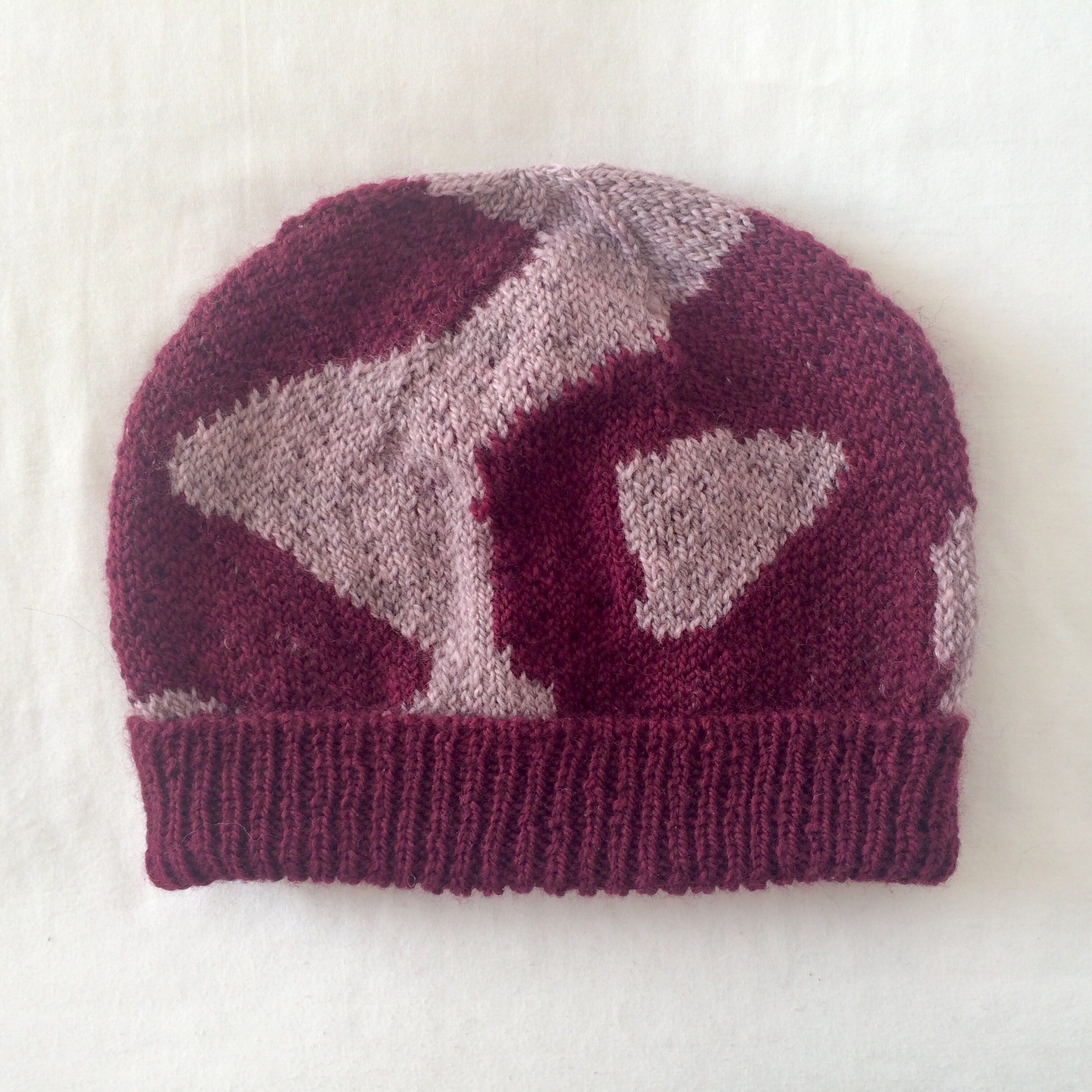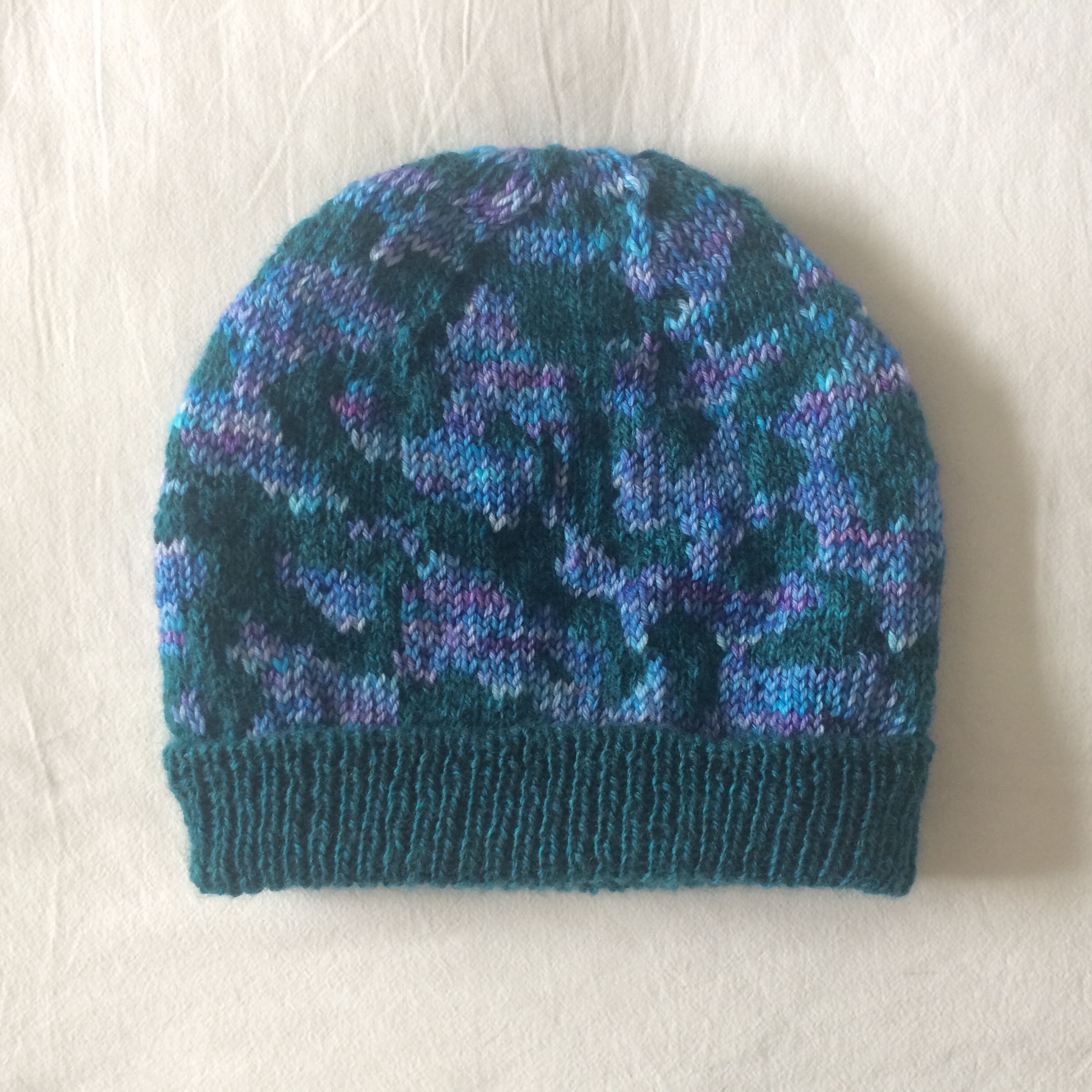biome hat generator
Knitting chart generator for the Biome Hat; a hat that uses simplex noise as a colourwork pattern.
simplex noise
Simplex noise is a clustered randomness algorithm. When translated into knit stitches it produces a colourwork pattern with an organic look.
The chart generator uses a new noise pattern each time the page is visited, creating a unique hat chart.
Unlike many traditional knitting patterns, there are no section repeats. The knitting chart shows the pattern in full. The lack of repeats does mean the pattern requires more focus when knitting, however, the upside is that any mistakes in following the pattern are barely noticeable.
charted knitting
The hat is knit in the round from the bottom up, using circular needles and/or DPNs. The chart is read from right to left, beginning at the bottom right corner. A basic knit two together decrease is used to shape the crown.
stranded colourwork
The pattern uses the stranded colourwork knitting technique, with two different colours of yarn. As there may be large stretches of knitting with one colour, I recommend catching your floats every 4 or 5 stitches.
yarn weight
DK / 8 ply (11 wpi)
gauge
22 stitches and 32 rows = 4 inches (10 cm) in stockinette
needles
16 inch US 4 (3.5 mm) circular needles
16 inch US 6 (4.0 mm) circular needles
Set of US 4 (3.5 mm) DPNs
Set of US 6 (4.0 mm) DPNs
notions
Stitch markers
Tapestry needle
yardage
164 - 208 yards (150 - 190 m)
sizing
Adult medium = 120 stitches and 50 rows = 21 inches circumference (unstretched), 10 inches long (unfolded brim)
directions
With the smaller needles, cast on 96 stitches and join for working in the round.
Round 1: (k1, p1) repeat to end of round.
Repeat round 1 until the brim measures 3.5 inches from the cast on edge. (for a folded brim)
Round 2: (k1, p1) repeat to end of round, placing a stitch marker after every 8 stitches.
Switch to the larger needles. Work from the chart, slipping stitch markers. Change to DPNs when there are too few stitches to fit on circular needles.
Break yarn, leaving an 8 inch tail. Using the tapestry needle, thread the tail through the remaining stitches and weave in ends.
abbreviations
DPNs - double pointed needles
k1 - knit stitch
k2tog - knit two stitches together
p1 - purl stitch
notes
I recommend saving your pattern at several different row counts, just in case you decide you want to start the crown decreases a bit earlier or later.

